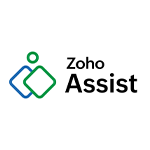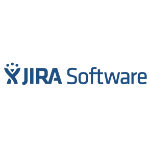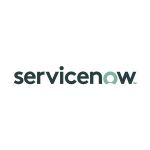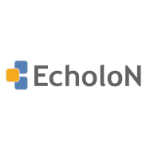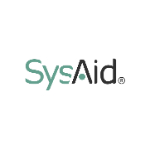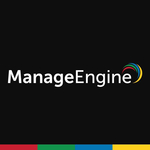TechnologyCounter provides genuine, unbiased real user reviews to help buyers make informed decisions. We may earn a referral fee when you purchase through our links, at no extra cost to you.
List of 15 Best IT Service Management Software
Showing 1 - 15 of 42 productsRemotePC is a versatile remote access software that allows you to securely access and control your computer from anywhere, at any time. With its user-friendly interface features, RemotePC aims to enhance your remote working experience and make it mor...Read RemotePC Reviews
Zoho Assist is a reliable cloud-based remote desktop solution with comprehensive secure remote access features. Enhance your customer support experience and explore the one-stop solution for all your remote support needs with our efficient remote acc...Read Zoho Assist Reviews
Jira is a project management tool that is trusted by thousands of teams worldwide. With its intuitive interface and customizable features, Jira helps teams of all sizes stay organized, collaborate efficiently, and deliver high-quality results. Whethe...Read Jira Reviews
Zendesk is a customer service software that helps businesses of all sizes deliver exceptional support to their customers. Its user-friendly platform streamlines communication through various channels and provides powerful tools for managing tickets,...Read Zendesk Reviews
Cherwell is a versatile and dynamic software designed to streamline and enhance your organizational processes. Its intuitive interface and robust features make it a powerful tool for optimizing efficiency and productivity. With Cherwell, managing com...Read Cherwell Reviews
BMC Software is a leading provider of innovative IT solutions for businesses of all sizes. With a focus on simplifying and streamlining processes, their software offerings empower companies to optimize their IT environments and drive digital transfor...Read BMC Software Reviews
ServiceNow ITSM is an innovative and highly efficient solution for managing IT services and processes. Designed to streamline operations and improve the overall efficiency of IT teams, ServiceNow ITSM offers a holistic approach to IT service manageme...Read ServiceNow ITSM Reviews
EcholoN is a and innovative software designed to enhance communication and productivity for businesses and individuals. With its advanced features and user-friendly interface, EcholoN has become a go-to solution for efficient and seamless communicati...Read EcholoN Reviews
SysAid is a platform designed to streamline IT support and asset management for businesses of all sizes. With its user-friendly interface features, SysAid helps organizations enhance efficiency, boost productivity, and improve customer satisfaction...Read SysAid Reviews
Freshservice is a popular cloud-based solution for ITSM (IT Service Management) and ITIL Service Desk. It offers a seamless user experience, combined with advanced capabilities for Ticketing and Asset Management. With a customer base of over 20000,...Read Freshservice Reviews
DunesFactory offers a comprehensive suite of software designed to assist both small businesses and large enterprises in enhancing their marketing strategies. From selecting the perfect domain to finalizing the release of their product, DunesFactory...Read Dunes Factory Reviews
ServiceDesk Plus is an AI-driven Unified Service Management platform, built to streamline and automate service delivery operations for both IT and non-IT departments, through visual workflows, predictive and generative AI capabilities, and out-of-the...Read ManageEngine ServiceDesk Plus Reviews
Sticky First SEO Software is an easy-to-use program that optimizes website content and structure for higher search engine rankings, with the goal of creating a long-term online presence...Read Sticky First Reviews
ManageEngine Patch Connect Plus is a specialized tool designed to enhance and streamline patch management within enterprise environments. It primarily focuses on integrating with SCCM and Intune to extend its capabilities for managing patches, coveri...Read ManageEngine Patch Connect Plus Reviews
Agiloft is the leading software for agile businesses. With its powerful platform, Agiloft revolutionizes the way organizations manage and automate their processes. Delivering unmatched flexibility and efficiency, Agiloft empowers businesses to stream...Read Agiloft Reviews
- What Is IT Service Management Software?
- Top Reasons Why Businesses Need IT Service Management Software?
- What Are the Top Key Features of IT Service Management Software?
- What Are the Top Benefits of IT Service Management Software?
- What Are the Steps to Choose the Right IT Service Management Software?
- What Are the Types of IT Service Management Software for Different Industries?
- What Are the Technology Trends for Best IT Service Management Software?
- What Are the Deployment Options for It Service Management Software?
What Is IT Service Management Software?
IT service management software is a specific kind of business application that has been developed with the purpose of assisting firms in effectively overseeing the provision of services to their clientele. The automation of several operations, including but not limited to request input, service delivery, performance monitoring, and billing, is feasible.
Furthermore, the utilization of this technology can facilitate effective management of client connections, various departments within a business, and financial data throughout the provision of services.
IT service management software offers a range of solutions that enable enterprises to effectively document and oversee their service offerings, establish service support frameworks, and monitor service requests. For instance, the program has the capability to facilitate the monitoring of customer orders, contracts, and assets, as well as facilitate pricing negotiations and request management.
Additionally, top IT service management tools can be utilized for the allocation of customer service personnel, the monitoring of customer complaints, and the evaluation of customer service efficacy. The program also possesses the capability to seamlessly interact with broader business systems, such as customer relationship management (CRM) software, thereby enabling enterprises to acquire supplementary insights pertaining to client behavior.
This can be utilized to enhance service delivery and sales techniques, providing firms with a competitive advantage in the market. In brief, the utilization of IT service management software facilitates the effective administration of service provision to clientele, seamless integration with other operational systems inside an organization, and the acquisition of valuable information pertaining to consumer behavior.
The utilization of this technology has the potential to enhance customer service by increasing efficiency and effectiveness, hence fostering improved customer relationships and facilitating organizational growth.
Top Reasons Why Businesses Need IT Service Management Software?
1. Improved visibility into service performance and asset data: IT service management software offers precise and extensive information regarding service performance, assets, and services, so enabling enterprises to make well-informed decisions.
2. Increased customer satisfaction: The utilization of IT service management systems facilitates the attainment of efficient service delivery and the enhancement of customer satisfaction. This is achieved by the program's ability to effectively monitor and manage client tickets, problems, and requests, ensuring their prompt resolution.
3. Automation of IT processes: IT service management software is designed to automate several manual processes involved in IT operations, including image management, patching cycles, and change management. This practice diminishes the burden on information technology employees and contributes to the enhancement of operational effectiveness.
4. Reduced IT costs: The utilization of IT service management systems has been found to be effective in cost reduction by eliminating the necessity of managing several systems and applications. Consequently, this leads to a decrease in labor expenses associated with IT management and an enhancement in operational efficiency.
5. Streamlined deployment of IT resources: The utilization of IT service management software facilitates a more efficient and organized allocation of IT resources within a cloud or virtualized setting. The process of streamlining contributes to the reduction of expenses associated with software, hardware, and management.
6. Better monitoring of the overall IT environment: IT service management tools play a crucial role in monitoring the performance of IT services, devices, and applications within the comprehensive IT environment.
7. Enhanced collaboration b/w IT personnel and end users: IT service management systems offer a collaborative platform for IT professionals and end users to collectively enhance the provision of services.
8. Improved accuracy of data in decisions: The utilization of IT service management software facilitates the precise representation of data, so enabling organizations to make well-informed decisions and effectively adapt to the ever-evolving demands of the industry.
9. Reduced risk of data loss: The utilization of IT service management systems mitigates the potential for data loss resulting from alterations or disturbances within the IT infrastructure, as it facilitates comprehensive control and monitoring of all modifications.
10. Increased agility: IT service management software offers firms the capability to promptly adapt to evolving requirements by enabling streamlined automation of operations and services.
11. Increased security: IT service management tools are designed to implement and maintain appropriate security measures in order to safeguard IT systems and data against illegal access, alteration, or loss.
12. Increased compliance: The utilization of top IT service management tools facilitates the maintenance of adherence to industry norms and regulations.
13. Improved communication: The utilization of IT service management software facilitates enhanced communication among IT employees and many stakeholders by offering a centralized platform for communication and cooperation.
14. Single source of truth: Top IT service management tools function as a centralized repository of reliable information pertaining to service performance and asset data, hence guaranteeing the utilization of precise and up-to-date information by teams.
15. Increased transparency: The utilization of IT service management software facilitates enhanced transparency among teams and stakeholders, as it grants team members the ability to observe the advancement of their projects and tasks.
What Are the Top Key Features of IT Service Management Software?
1. Automated incident and change management: IT service management software facilitates the automation of an organization's IT incident and change management process, resulting in enhanced workflow efficiency and expedited resolution times.
2. Service catalogs: Service catalogs offer clients an extensive compilation of accessible services, facilitating their prompt access to the requisite information.
3. Service Level Agreement (SLA) Management: The implementation of Service Level Agreement (SLA) management enables organizations to effectively assess and oversee their performance in relation to predetermined service levels.
4. Request fulfillment: This functionality streamlines and automates service inquiries, resulting in enhanced customer service and expedited issue resolution.
5. Knowledgebase and self-serve portals: Knowledge bases and self-service portals provide consumers with efficient and convenient access to pertinent information pertaining to their inquiries.
6. Analytics and reporting: Analytics and reporting facilitate the quantification of service management performance and user satisfaction levels within enterprises.
7. IT asset management: The use of IT asset management capabilities allows firms to effectively monitor and manage their hardware, software, and other IT assets.
8. Ticket tracking: The implementation of ticket tracking systems enables firms to effectively monitor the status and advancement of service requests, hence facilitating the timely and efficient settlement of such requests.
9. Mobile access: Mobile access enables users to conveniently access IT service management solutions using their mobile devices.
10. Integrated workflows: The implementation of integrated workflows enables firms to optimize their business processes and enhance operational efficiency.
What Are the Top Benefits of IT Service Management Software?
1. Improved Efficiency: The utilization of the best IT service management software facilitates the optimization of IT activities and processes, thereby diminishing the need for manual administrative labor and enabling the automation of repetitive procedures. This enhances overall efficiency and facilitates the expeditious and precise completion of duties.
2. Greater Visibility: IT service management systems offer enhanced visibility to managers and IT employees, enabling them to promptly detect possible difficulties and proactively implement remedies.
3. Optimized Costs: The utilization of IT service management ITSM software contributes to the mitigation of costs related to IT operations through the automation of manual procedures and the consequent reduction in the requirement for additional personnel expenditures.
4. Improved Control: By using IT service management ITSM software, IT personnel can enhance their oversight of IT operations, resulting in enhanced service delivery and performance.
5. Risk Management: The best IT service management tools facilitate the streamlined identification and evaluation of potential hazards by IT personnel, hence enabling them to promptly and effectively implement appropriate risk mitigation measures.
6. Improved Collaboration: IT service management systems play a crucial role in enhancing collaboration and communication across IT teams and stakeholders, hence leading to enhanced decision-making capabilities and a reduction in process delays.
7. Increased Productivity: The best IT service management tools have been shown to enhance operational efficiency and diminish the time required to do various operations, hence leading to enhanced production.
What Are the Steps to Choose the Right IT Service Management Software?
1. Identify and understand your specific needs: Prior to selecting the best IT service management tools, it is imperative to ascertain the specific features and functions that are necessary to effectively cater to the needs of users, customers, and the overall business requirements within the organization.
2. Research available options: Please evaluate the various options and choose the solution that most effectively meets your requirements.
3. Set a budget: When evaluating the cost of the solution, it is important to consider its potential value to the organization.
4. Choose a provider: It is imperative to ensure the selection of a supplier that aligns with the specific requirements of the firm.
5. Try a demo: It is recommended to execute an iteration of the proposed solution on a demonstration server or within a cloud environment.
6. Consider user training and support: It is imperative to ensure that the best IT Service Management tools are equipped with high-quality user training and comprehensive support services.
7. Check for integrations: Examine the extent to which the proposed solution seamlessly incorporates with the pre-existing systems.
8. Ask for feedback: Solicit input from colleagues and partners regarding their evaluations of both the solution and the provider.
9. Assess the system’s usability: It is imperative to ensure that the top it service management tools possess a high level of comprehensibility and user-friendliness.
10. Undergo a trial period: Conduct a comprehensive evaluation of the system over a prolonged duration to ascertain its alignment with your requirements.
What Are the Types of IT Service Management Software for Different Industries?
A diverse range of information technology service management software solutions are accessible to cater to the specific needs of various sectors.
In a broad sense, these software applications for service management serve to automate and enhance the supply and support of IT services, while also facilitating monitoring and reporting functions.
Frequently employed software applications inside this particular category encompass:
1. There are several IT service management products available in the market that adhere to the IT Infrastructure Library (ITIL) standards. Examples of such systems are OpsRamp, ServiceNow, and BMC Remedy Service Management. These solutions facilitate the adherence of enterprises to the Information Technology Infrastructure Library (ITIL) framework, hence enhancing the efficiency of IT service delivery and support.
2. HelpDesk software, such as Zendesk and FreshDesk, aids teams in the monitoring and organization of incoming customer service inquiries.
3. Configuration Management Database (CMDB) solutions, such as Snow Inventory, offer inventory tracking and full asset management capabilities.
4. IT asset management solutions, like SolarWinds N-central, facilitate the organized and secure management of software, hardware, licensing, and other IT assets by teams.
5. Service Desk software, such as ManageEngine, offers solutions for incident management, change management, and problem management.
6. Business process automation software, such as Microsoft Flow, facilitates the automation of repetitive manual processes for teams.
7. Network monitoring systems, such as Nagios, facilitate the proactive identification of issues within an infrastructure and offer root cause investigation capabilities to teams.
8. The aforementioned instances represent a limited selection of the diverse array of the best IT service management software solutions that cater to various industries. Additional software options may be accessible to an organization based on its specific requirements.
What Are the Technology Trends for Best IT Service Management Software?
In recent years, there has been a notable surge in the emergence of novel technological developments that comprise the best IT service management software.
These developments encompass the integration of machine learning and artificial intelligence to enhance system automation, the incorporation of Internet of Things (IoT) technology for instantaneous analytics, and the utilization of cloud services to facilitate the delivery of data and services across multiple platforms.
In addition, the current trends in the field involve the implementation of DevOps methodologies to optimize the efficiency of development and operations processes. Additionally, there is a growing emphasis on the development of user-friendly interfaces to enhance accessibility and usability of software applications.
In recent times, a considerable number of IT service management software have adopted blockchain technology as a means to ensure safe transactions and mitigate instances of fraudulent activities.
What Are the Deployment Options for It Service Management Software?
In the realm of IT service management software, there exist three primary deployment choices, namely on-premise, cloud-based, and hybrid. On-premise deployment refers to the installation and maintenance of IT service management ITSM software on hardware and software owned by the customer.
This approach empowers users with increased autonomy over their software, enabling them to personalize it according to their individual preferences. Cloud-based deployment refers to the utilization of a third-party provider's cloud infrastructure, whereby clients are able to access the software and its associated features.
This feature enables users to remotely access their software, hence obviating the necessity for physical installs of hardware and software on-site.
The hybrid deployment approach integrates both on-premise and cloud-based deployment options, offering advantages to customers seeking enhanced software control while still necessitating the flexibility provided by cloud-based deployment.
In general, the deployment of IT service management ITSM software can be customized to suit the specific requirements of the customer. The pros and disadvantages of on-premise, cloud-based, and hybrid deployments should be thoroughly evaluated to determine the most suitable option for each specific firm.

